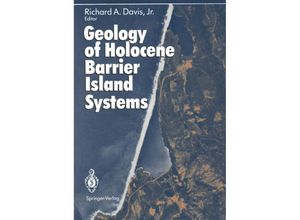Barrier islands represent a complex coastal system that includes a number of different
sedimentary depositional environments nearshore zone beach dunes washover fans marshes
tidal flats estuaries lagoons and tidal inlets. The morphodynamics of these fragile coastal
systems provide a further complication to this coastal type. Although barrier islands comprise
only 15% of the world's coastline they have received a far greater proportion of attention
from the scientific and engineering community and more recently from coastal managers and
environmentalists. Modern barrier islands are arguably the most expensive and most vulnerable
of all coastal environments. Pressure from developers for residential industrial and
recreational development has caused most of our barriers to become significantly impacted by
human activity especially over the past few decades. These pres sures have led to extensive
preservation of natural barriers through efforts from all levels of government and also by
private organizations. Governments have also formed coastal management programs that help to
control any future de velopment with the intent being to keep human activity compatible with
barrier island morphodynamics. In order to devise appropriate coastal zone management programs
it is necessary to have a comprehensive understanding of the morpho dynamics of barrier island
systems. This volume provides comprehensive details on barrier island morphology sediment
distribution and the process-response mechanisms that cause changes to both. These are the
important aspects of barrier systems that can provide important input into the development and
implementation of coastal management programs.



